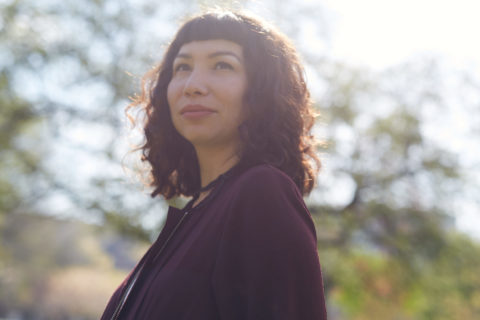Changemaker Sage Paul on Building a Future for Indigenous Design
"It’s OK to ask the industry to change the way it works."
As the founder of Indigenous Fashion Week Toronto (IFWTO) and a thought leader in Canada’s style space, Sage Paul has made great strides for Indigenous representation within fashion: She facilitated an unprecedented capsule collection featuring eight Indigenous labels in partnership with Quebec retailer Simons that launched this past spring; she’s a member of the Program Advisory Council for Toronto’s Ryerson School of Fashion; and she teaches an Indigenous fashion course, which she created, at George Brown College (also in Toronto), where she studied fashion design.
As is the case for many groundbreakers, it took time for Paul to find her way. “I didn’t really see myself in the industry — not because I felt excluded but because I felt that it was unattainable,” she says. “I didn’t have the financial resources to pursue design, for example. And culturally there was a disconnect.”
Paul’s perspective began to shift after she became involved with the imagineNative Film + Media Arts Festival; she designed costumes for works that were screened between 2005 and 2008. “I saw Indigenous people creating films with our stories,” she says. “It really transformed my understanding of how a medium that so often misrepresents us could be used as our lens.”
View this post on Instagram
Paul has also employed her design prowess as a means of artistic communication; she has shown works at the Gladstone Hotel and, more recently, the Art Gallery of Ontario. But it was a 2012 solo exhibition at Toronto’s Harbourfront Centre that would prove the most fateful: She connected with the renowned cultural hub years later to tell them that she had an idea for what would become IFWTO — a multi-day event that launched in 2018.
Paul, who identifies as an urban Denesuliné tskwe (“woman” in Dene), conceived of IFWTO after spending time working within her ancestral community of the English River First Nation in Saskatchewan. She says that engaging in traditional practices like indigo dyeing and hide tanning sparked an idea for a showcase that reflected the diverse yet unifying Indigenous craftwork that can be found across the country.
For the upcoming all-digital IFWTO, Paul and her team have produced brief films featuring BIPOC performers that will air over the course of four days, displaying clothing and accessory collections from 16 designers. The schedule will also offer pre-recorded panel discussions for public viewing and micro-meeting opportunities that will afford designers interactions with retail buyers and press. And a marketplace will aggregate offerings from multiple artisans and brands, giving a “see now, buy now” kind of appeal to items that are labour-intensive in construction and often imbued with cultural significance.
View this post on Instagram
Perhaps the most intriguing aspect of the whole affair is the art show devised in collaboration with Mohawk multimedia artist Skawennati. “We’re putting together an exhibition using her Second Life-world app, Tech Island,” says Paul of the compelling component that she hopes will push people just far enough out of their comfort zones. “We are digitally rendering the work of seven artists who were originally supposed to be showing live and creating a virtual space where people can actually go into Second Life and walk around.”
One of Paul’s strengths is the ability to urge others toward an unfamiliar though promising direction. For the Simons x IFWTO project, she insisted that the designers be paid in advance of work completion, which isn’t standard procedure. “That’s one thing I’ve learned: It’s OK to ask the industry to change the way it works,” she says. “I know that we asked them to do things they weren’t used to, and it completely shook up their infrastructure. But it was exciting to be able to come and say ‘Can we look at it this way?’”








